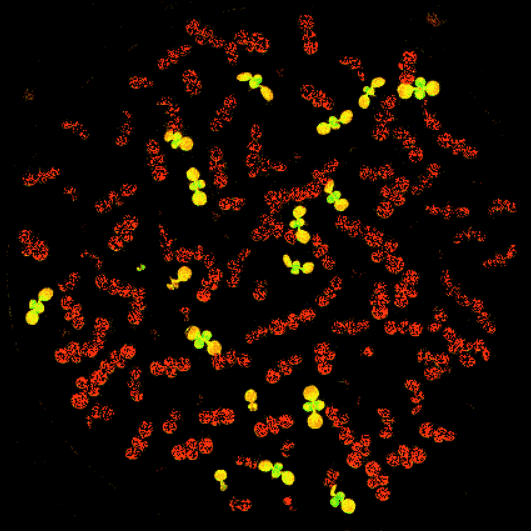Most photosynthetic organisms are unable to use all of the sunlight that they absorb, so they must protect themselves against the harmful effects of excess light, including production of reactive oxygen species (ROS). Many types of photoprotection have evolved in plants and algae to regulate photosynthetic light harvesting and minimize production of ROS.
NPQ


Photosynthetic light harvesting is regulated by several mechanisms that are collectively referred to as non-photochemical quenching (NPQ). The Niyogi Lab has used good old-fashioned forward genetics, one of the most powerful experimental approaches to understand how biology works, to study NPQ, and we discovered the roles of PsbS and LHCSR proteins in NPQ of plants and algae, respectively. Our current NPQ research is focused on understanding the evolution, biophysical mechanisms, and structural biology of NPQ. We collaborate closely with the labs of Graham Fleming, a physical chemist and ultrafast spectroscopist in the Department of Chemistry, and Eva Nogales, a cryo-EM expert in the Department of Molecular and Cell Biology at UC-Berkeley. Our three labs are also part of the Molecular Biophysics and Integrated Bioimaging Division at Lawrence Berkeley National Laboratory (LBNL), and our collaborative project epitomizes the team science approach that is the hallmark of LBNL.
This research is supported by the Photosynthetic Systems program of DOE-BES.
Singlet oxygen signaling
Singlet oxygen is the major type of ROS that is a byproduct of photosynthesis in plants and algae. Although singlet oxygen can cause damage to pigments, proteins, lipids, and nucleic acids in the chloroplast, it can also initiate signaling pathways that result in changes in nuclear gene expression. We discovered that the green alga Chlamydomonas reinhardtii is able to acclimate to low levels of singlet oxygen, and we are using forward and reverse genetics to identify genes involved in signaling and protection against singlet oxygen.
This research is supported by DOE-BES and HHMI.

